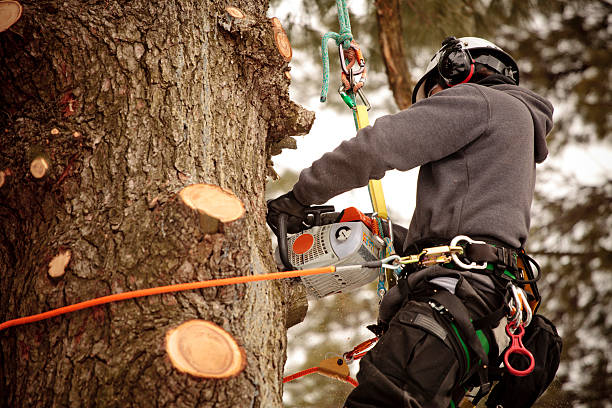What is Tree Pruning?
by siteadmin

Tree pruning is an integral component of landscape maintenance for any property, helping protect it from potential damages caused by overgrown branches, as well as encouraging healthy plant growth.
Pruning can be done in several ways, and understanding the difference between pruning and trimming is key for successful tree maintenance. Pruning offers many advantages:
Removing Dead or Decaying Branches
Overgrown trees and shrubs pose potential safety risks to those in their vicinity, blocking scenic views and interfering with utility lines.
An experienced pruner will remove dead and dying limbs to maintain the health and structure of the tree while also decreasing any hazards they could pose. Furthermore, pruning off diseased or insect-infested branches helps prevent their spread across landscape and property boundaries.
Deleting unnecessary branches helps open up a canopy for greater sunlight and airflow, and foster growth of remaining branches by encouraging their vigorous expansion.
When trimming branches, it is essential that cuts be made on the side opposite of their stem collar (a small lip of bark that protrudes from each branch). A flush or stub cut leaves open decay, potentially leading to irreparable damage; on top of this, cutting correctly also minimizes wound damage so the tree can recover faster.
Increasing Light and Air Circulation
Trees that become overgrown or covered with dead branches block light and air circulation, leading to reduced health benefits and aesthetic enhancement. Regular pruning is therefore key for both aesthetics and strength of a garden or yard's trees.
Pruning techniques that enhance tree health and beauty include crown thinning, crown reduction, crown lifting and pollarding. Each technique serves its own special purpose when applied to specific trees.
Thinning reduces plant density by selectively cutting back selected branches all the way back to their point of origin, increasing light penetration and air circulation throughout the canopy. This improves light penetration and encourages fruit production in fruit trees. Furthermore, thinning can alleviate stress on limbs from gravity, wind or other forces which damage them; using tarlike wound dressing may interfere with callus tissue which protects trees against decay organisms.
Increasing the Tree’s Strength
Pruning helps trees and shrubs flourish by eliminating dead or diseased branches, opening up their canopy, and encouraging new growth. Pruning also protects against safety risks while improving plant health by increasing air circulation – essential for combatting leaf diseases – while it may even promote fruit production for certain fruits like peaches or apples by making sure spurs receive enough light exposure.
Pruning can help protect both your home and property from falling branches, so regular pruning should be carried out. Hiring professional tree trimmers can assist with this task by eliminating unwanted limbs from your landscape's structure as well as encouraging new growth.
Pruning can be done any time of year; however, some types of pruning require specific seasons based on the species of plant being pruned. For instance, spring-flowering or summer fruit trees typically need pruning after their blooming cycle or during midsummer; crown cleaning, however, is an ongoing form of pruning which should be performed year round.
Increasing the Tree’s Beauty
Pruning trees is an invaluable way to maintain their healthy appearance, including removing diseased branches, encouraging new growth and creating an appealing shape. Furthermore, pruning can reduce risks to your property or structures by cutting away overhanging branches that overshadow power lines or come close to buildings and can potentially cause damage.
Pruning young trees helps promote faster growth by allowing sunlight to penetrate their canopy and increasing photosynthetic energy production, ultimately producing healthier, stronger and more attractive trees.
When pruning large limbs or shrubs, it's essential to follow a three-step pruning process in order to prevent tears or rips in the bark during cutting. A three-step process also reduces insect infestation risks and pollarding is an option which reduces height while encouraging dense foliage growth; topiary involves shaping trees and shrubs into decorative shapes; crown cleaning removes dead and diseased branches from your trees/shrubs – just some examples of types of pruning techniques available today!
https://www.prvtreeservices.com/
Tree pruning is an integral component of landscape maintenance for any property, helping protect it from potential damages caused by overgrown branches, as well as encouraging healthy plant growth. Pruning can be done in several ways, and understanding the difference between pruning and trimming is key for successful tree maintenance. Pruning offers many advantages: Removing…
Recent Posts
- Affordable Fencing Solutions: Fence Company Rochester NY Offers Insight on the Cheapest Fence Installations in Rochester, NY
- Affordable Fencing Solutions: Fence Company Rochester NY Offers Insight on the Cheapest Fence Installations in Rochester, NY
- Expert Roofers Columbus Shares Insights on the Roofing Installation Process in Columbus, GA
- Mastering Tree Removal: A Comprehensive Guide for Tree Care in Fairfax
- Mastering Tree Removal: A Comprehensive Guide for Tree Care in Fairfax
